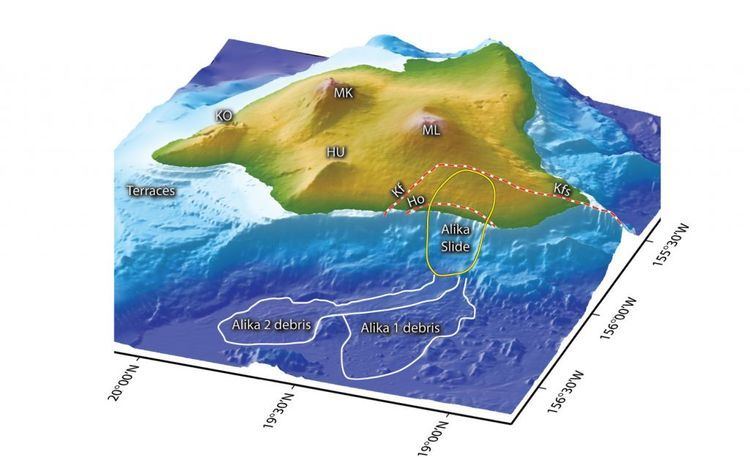 | ||
The Hilina Slump is a 5,000 cubic mile (20,000 kilometre³) section of the Big Island of Hawaii on the south flank of the Kilauea volcano. Between 1990 and 1993, Global Positioning System measurements showed a southward displacement of the south flank of Kilauea up to approximately 10 centimeters per year. The slump has the potential of breaking away at a faster pace in the form of an underwater landslide. In Hawaii, landslides of this nature are called debris avalanches. If the entire Hilina Slump were to slide into the ocean at once, it could cause an earthquake in excess of a 9 in magnitude, and a megatsunami. Previous megatsunamis in Hawaii 110,000 years ago caused by similar geological phenomena may have created waves 1,600 feet (500 m) tall.
Contents
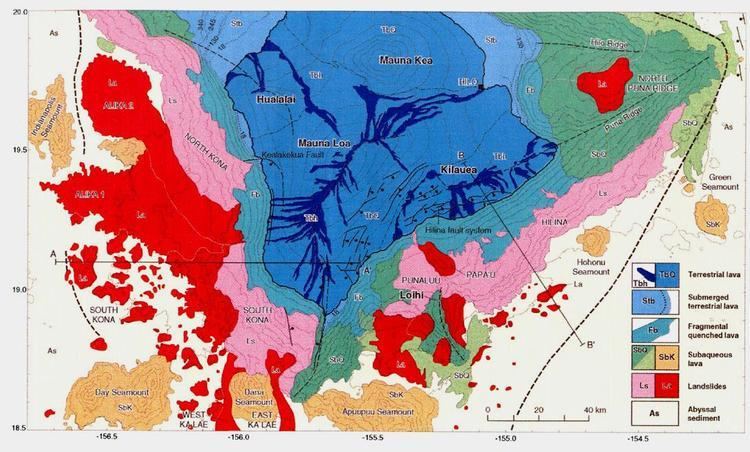
Geology
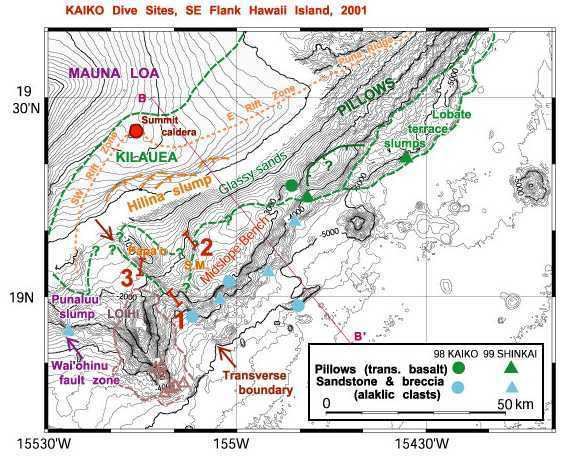
The Hilina slump is sliding seaward on top of the southern flank of the Kilauea volcano, at an average speed of 10 cm/year. Kilauea is the southeastern portion, about 13.7%, of the Big Island of Hawaii. Compared to the 25,000 to 35,000 km3 volume of Kilauea, the submarine slide is between 10,000 and 12,000 km3, making up about 10% of the island. Model results based on present day slope and sea level suggest that earthquake accelerations stronger than about 0.4 to 0.6 g are enough to exceed the static friction coefficient resulting in a slip along a failure surface. However, recent undersea measurements show that an undersea "bench" has formed a buttress at the forefront of the Hilina Slump, and "this buttress may tend to reduce the likelihood of future catastrophic detachment."

As the Pacific plate is being pushed to the west/northwest, it is traveling over a hot spot that is erupting silica poor basaltic magma. The Big Island of Hawaii is the youngest of the chain of Hawaiian shield volcanoes that have penetrated and scarred the overriding Pacific plate. Located on the eastern side of the Big Island, Kilauea and Mauna Loa are believed to be the only Hawaiian volcanoes still being fed on a large scale by the magma chambers below. Since the northeastern flank of the Hilina slump is still growing, the sliding southern flank of the slump may be experiencing friction resisting slope failure as the northeastern flank is pushing upwards. Once the northeast flank becomes inactive, and the resisting frictional force decreases, the Hilina slump may be more susceptible to submarine landslides caused by earthquakes.
Earthquakes
1868 Hawaii earthquake
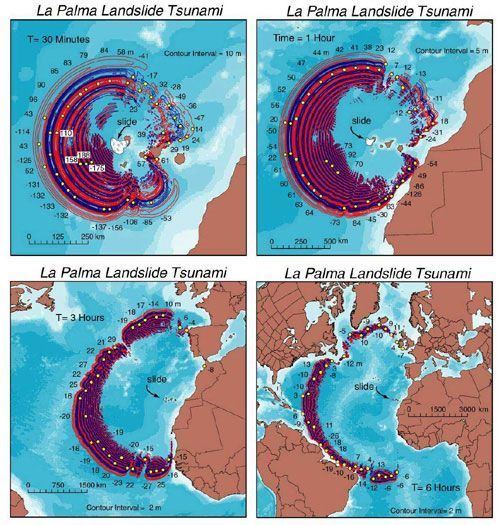
On April 2, 1868, an earthquake in this area with a magnitude estimated between 7.25 and 7.75 rocked the southeast coast of Hawaii. It triggered a landslide on the slopes of the Mauna Loa volcano, five miles (8 km) north of Pahala, killing 31 people. A tsunami claimed 46 additional lives. The villages of Punaluʻu, Ninole, Kawaa, Honuapo, and Keauhou Landing were severely damaged. According to one account, the tsunami "rolled in over the tops of the coconut trees, probably 60 feet (20 m) high ... inland a distance of a quarter of a mile in some places, taking out to sea when it returned, houses, men, women, and almost everything movable."
1975 Hawaii earthquake
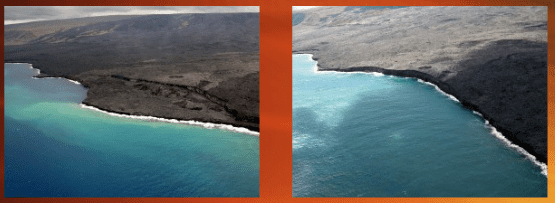
On November 29, 1975, a 40-mile (60 km) wide section of the Hilina Slump slid 11 feet (3 m) into the ocean, widening the crack by 26 ft (8 m). This movement caused a 7.2 magnitude earthquake and a tsunami that reached a maximum height of 47.0 feet (14.3 m) at Keauhou Landing. Oceanfront properties were washed off their foundations in Punaluʻu. Two deaths were reported at Halape, and 19 other persons were injured. The shoreline at Keauhou Bay was dramatically altered.

